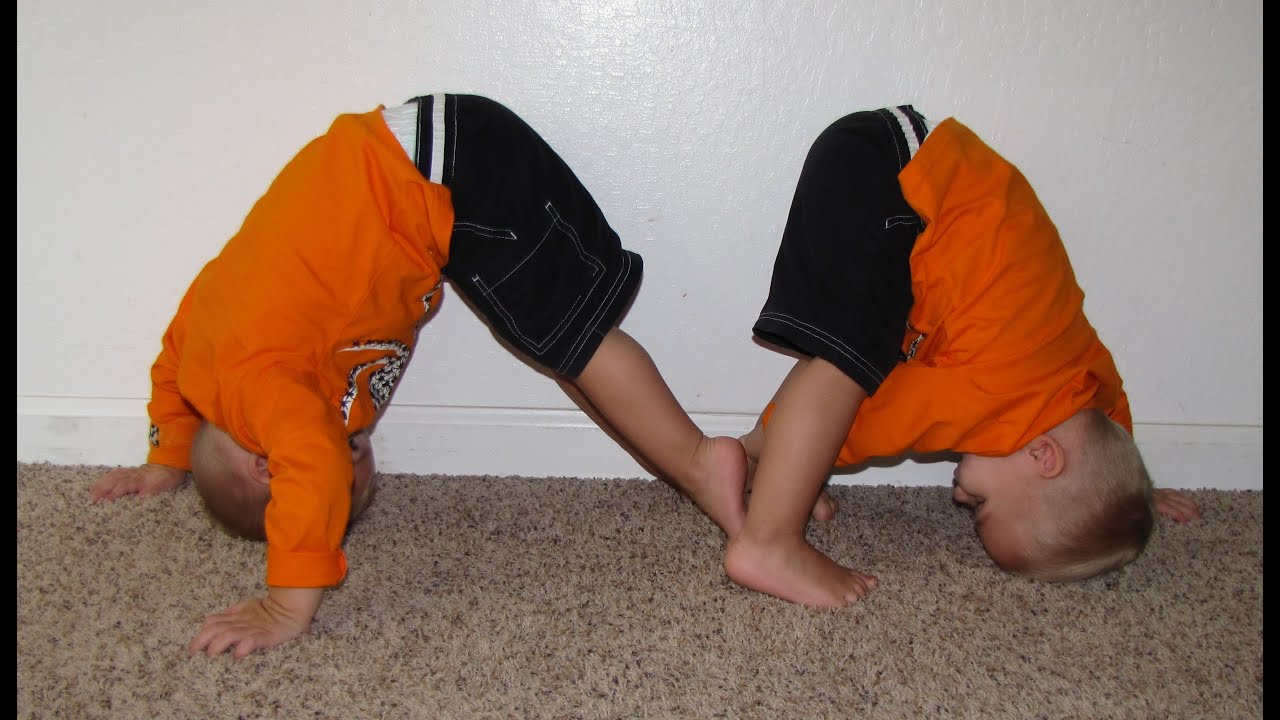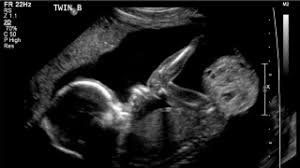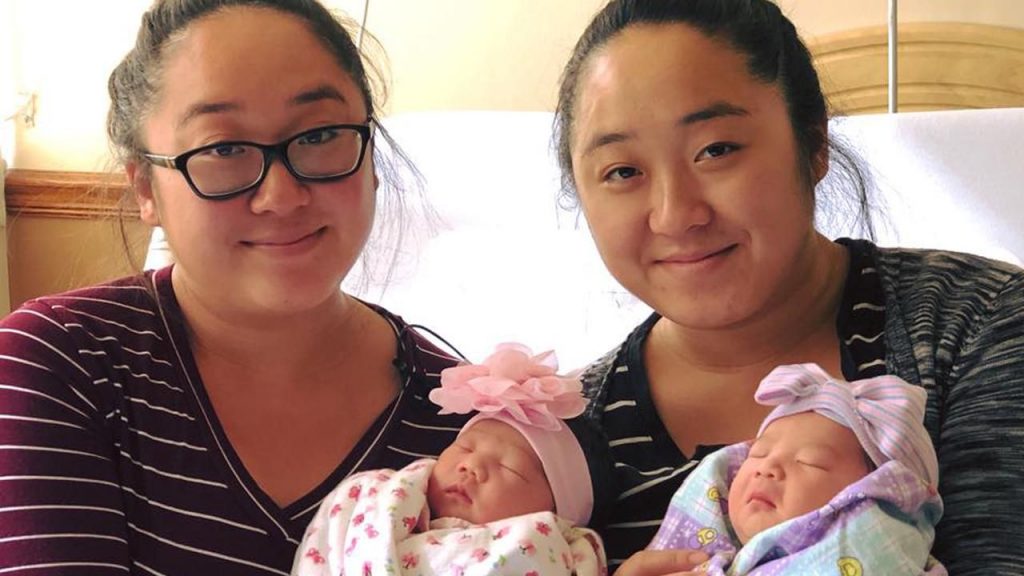
Last week, Kathleen Corcoran shared a horrifying review of the portrayal of twins in horror films. The focus was on identical twins and the societal assumption of duality: good/bad, light/dark, the pervasive trope of one twin being evil—though sometimes both claim to be the evil twin!

There is a long history of assuming evil by one or both twins, attributing natural disasters and disease to twins, sometimes leading them to be left alone to die or even buried alive along with their mother. Myths of twin mental telepathy, mate-swapping, and all sorts of weirdness have been around for centuries. But twins are fertile material for writers even without going to the dark side!

In the beginning:
Twins are of two types.
- Identical twins (also called monozygotic) are the result of one egg, fertilized by one sperm, that for some reason separates into two cell masses shortly after fertilization. Their genetic codes are identical and permanent.
- Fraternal twins (also called dizygotic) are the result of two eggs being fertilized by two sperm during the same fertile period of the mother’s cycle. With the same father, fraternal twins share approximately 50% of their genetic heritage. They are no more alike genetically than any other full siblings of the same parents.


In this instance, the girls are full siblings of the same two parents. Plot point! Given the differences in appearance, what if the father suspected that the mother had been with another man?
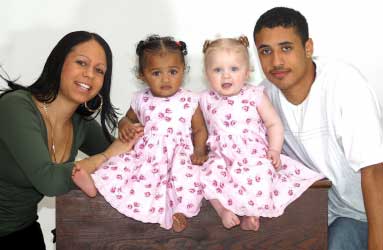
How could fraternal twins have different fathers? It starts with the mother releasing more than one egg and then having sex with more than one man within the few days of her fertile cycle. According to Brian Boutwell in Psychology Today, 11/19/2017, “…more than 2% of fraternal twin pregnancies involve the genetic contributions of separate men, but Segal [Dr. Nancy L. Segal] contends that it’s likely higher, since when the two dads are of the same race and ethnicity, mothers may assume that both twins have the same sire.”
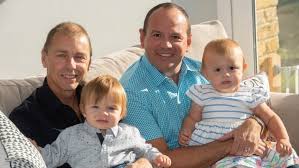
Writers: Imagine the situation in which a woman would have sex with more than one man within days of each other. Rape? Promiscuity? Two intense relationships she’s conflicted about?

There are more fraternal twins among us than identical ones.
The likelihood of identical twins is the same around the world, about 3-4 in 1,000 (3.3% in the U.S.). The incidence of fraternal twins varies by geography, from 6 to over 20 per 1,000 deliveries. Among the Yoruba in Nigeria, 1 in 11 people is a twin.

Do twins run in families?
Fraternal twins have long been recognized as likely to recur in families. Although women typically release only one egg per cycle, some women release multiple eggs on a regular basis, increasing the likelihood of fraternal twins. This tendency for hyperovulation can be an inherited trait straight from mothers to daughters and also to the daughters of sons. Writers: consider a character who is a matriarch in a twinning family.

Fraternal twinning rates vary across populations. A 2011 study reported that the highest rates of twinning in Central African populations, especially Benin. Asia and Latin America had the lowest rates of twinning. In the US, Asian American and Latino/Hispanic Americans (21.8/1000) have the lowest rates; African American women are more like (36.8 per 1,000) to have twins than Caucasian women. Getting pregnant while breastfeeding (while less likely overall) increases the likelihood of twins (11.4% vs. 1.1% in non-breastfeeding women).

Historically, identical twins have been assumed to result from random events in utero. However, twin researcher Dr. Nancy Segal traveled to Brazil to spend time with a family that includes 22 sets of identical twins born across five generations. A study in Jordan focused on 13 sets of identical twins. Similarly, seven different families sharing similar alleles produced at least two pairs of identical twins. Clearly, this area of study is full of opportunities for further research.
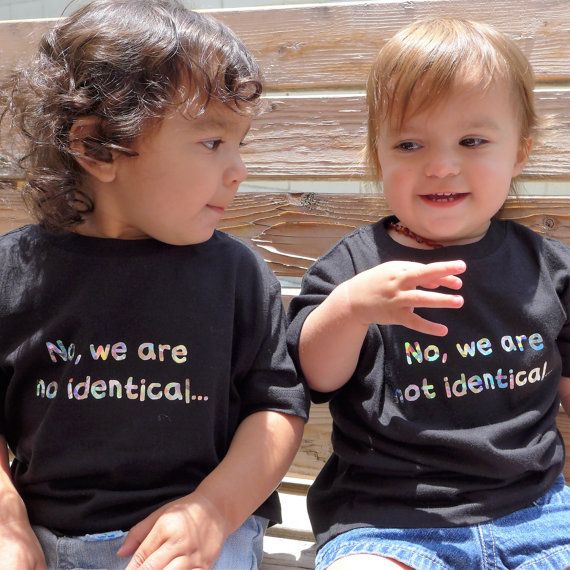
Other factors affecting twinning: besides heredity, being an older woman (over 30), having previous children, being taller, and having a high body mass index (over 30) all increase the likelihood of fraternal twinning. Research among the Yoruba indicates that a diet high in beans and yams may contribute to twinning! Writers: to make your twinning thread realistic, first determine why they are twins.
Vanishing twin syndrome and related phenomena:
An estimated one in eight natural pregnancies begins as twins, but in the early weeks of the pregnancy one zygote (fertilized egg) is reabsorbed or spontaneously aborted, perhaps because of birth defects making it nonviable.
But sometimes the twin doesn’t really vanish: in these cases, the fetus is partially reabsorbed and remnants of the nonviable fetus are found in the mother, placenta, or surviving twin. This is most likely to occur during the second or third trimester. The death of one twin at 15-20 weeks may result in papyraceous, a tiny paper-like flattened fetal remnant. Writers: imagine the possibilities. A teratoma tumor containing bone, hair, teeth, or tissue fragments may be found in the survivor. Some survivors feel longing, guilt, grief, or problems with relationships or sexuality.
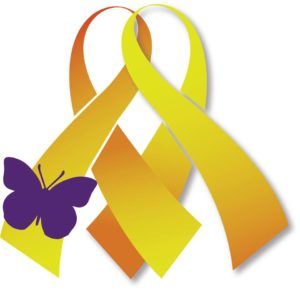
Lifelong twinless-twins are people whose twin died at or near birth. Often the surviving twin strives to assert their uniqueness and/or feel as if they’re living for two people. Famous examples include Elvis Presley, painter Diego Rivera, pianist Liberace, and writers Thornton Wilder and Philip K. Dick.

The basic framework for twin studies: the goal is to understand variances in behavioral, physical, and mental health in the population at large. Studying twins allows researchers to separate (at least to a certain degree) the three contributing factors.
- Ggenetic effects/ heritability
- Shared environment, both in utero and after birth
- Unshared/ unique/ non-shared environment, happen to only one twin (e.g., accidents, travel, work, classes)
Overall, research indicates that the relative importance of genetic vs. environment depends on the specific trait being studied. (Duh!)

Birth order for twins
- The general assumption is that twins are born minutes apart, but lots of twins have different birthdays. The longest time between deliveries is 87 days! Peggy Lynn, of Danville, Pennsylvania, delivered twins Eric and Hanna 84 days apart, one in November 1995, one in February 1996.
- Birth order doesn’t seem to affect psychological outcomes.
- Second-born twins are at higher risk for health problems including respiratory distress, neonatal trauma, and infections.
- Along with the history of primogeniture in Great Britain, with older being the heir, there has been a tendency to assume some sort of primacy, privilege, or superiority to being firstborn. However, among the Yoruba of Nigeria, the firstborn twin (always named Taiye) is assumed to be the younger of the twins: they believe the senior twin (always named Kehinde) sent the younger one out first to scout the world and declare it safe.

(photo by BellaNaija)
Other twin facts
- In utero, as early as 18 weeks, twins seem to reach for each other intentionally and stroke each other. Early signs of bonding?
- About 40% of twins develop their own language.
- Twins yawn contagiously. Most non-twins don’t exhibit this behavior till 4 or 5 years old.
- They affect each other’s sleep patterns for years.
- Identical twins still have different fingerprints.
- One twin can’t get away with a crime by blaming the other twin because modern technology can distinguish them (facial recognition, fingerprints, hair follicles, etc.).
- Twins are more likely than singletons to be left-handed.
- Identical twins can vary greatly in specific skills.
- E.g., Jose Canseco had 7,057 at bats in major league baseball and 462 homers; Ozzie Canseco had 65 at-bats and no homers.
- About one third of twins are opposite-sex fraternal.
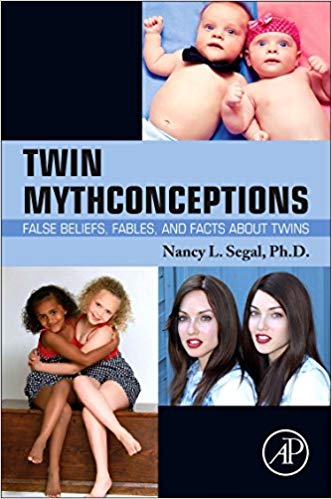
Weird similarities of twins reared apart:
Twins switched out at birth are rare, but many twins (at least 1,894 cases since 1922) have been reared apart as a result of adoption.
According to Dr. Nancy Segal, “they [twins reared apart] cannot be communicating because they are often unaware that the other twin exists—instead, they are reflecting their matched abilities, tastes, and temperaments.” Thus they may read the same books, follow similar household routines, or enjoy the same hobbies.
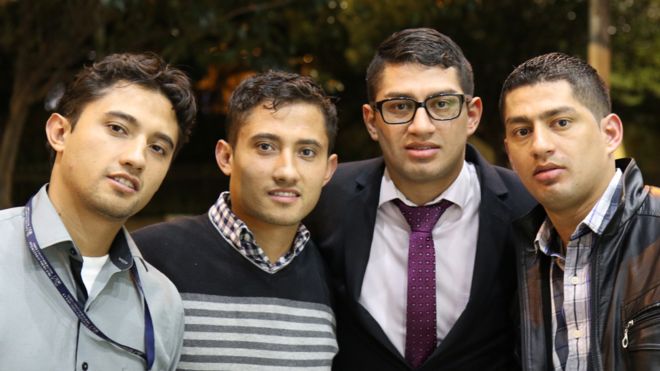
Jorge Enrique Bernal Castro, William Canas Velasco, Carlos Bernal Castro and Wilber Canas Velasco were switched at birth in Columbia and raised as two sets of fraternal twins instead of pairs of identical twins.
Another set of separated twins studied by Segal were “The Jim Twins.” Reunited at age 39 without previously knowing the other existed, they’d been adopted and lived forty miles apart in Ohio. Both got terrible migraine, bit their nails, smoked Salem cigarettes, drove light blue Chevys, scored poorly in math and spelling, had worked at McDonald’s and as part-time deputy sheriffs. One named his first son James Alan; the other named his first son James Allan. Both married women named Linda, divorced, and then married women named Betty.
Identical twins habits, interests, intelligence, and religion seem immune to separate upbringings.
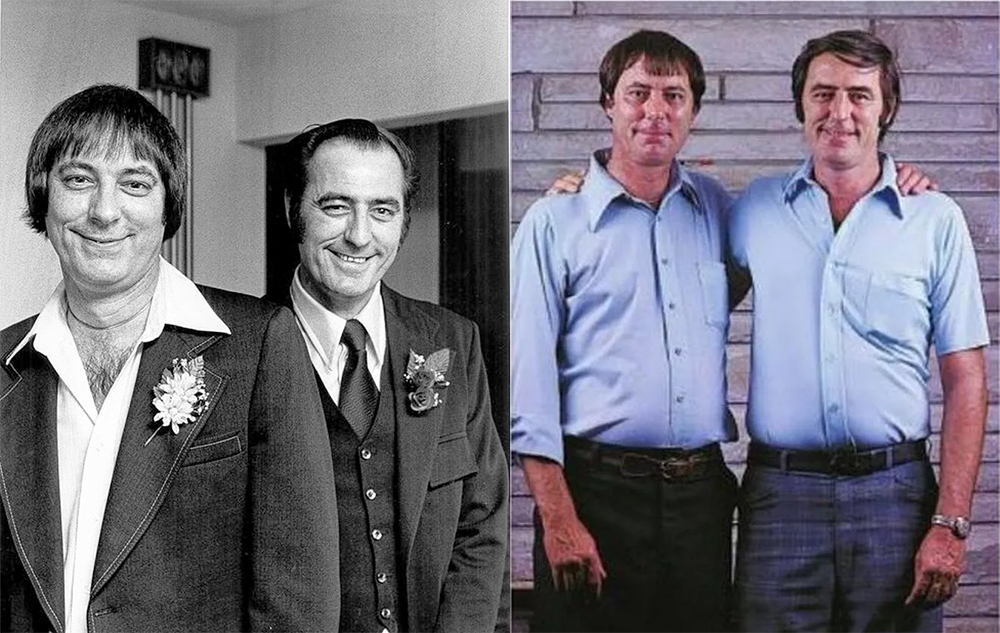
And then there’s the environment:
Even with identical DNA, twins can exhibit remarkable differences in the way their genetics interact with the environment. For example, a set of four identical sisters were all diagnosed with schizophrenia at age 24, primarily as a result of an abusive upbringing. One sister had mild symptoms and might never have been diagnosed if not for her three sisters. The symptoms of the other three ranged from paranoia and hallucinations to catatonia and incoherence.
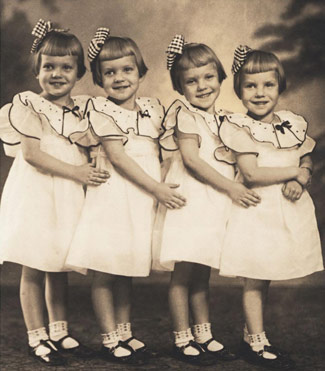
Nowadays, it is widely acknowledged that all human disorders involve both a genetic and an epigenetic (environmental) component.
Although both identical and fraternal twins share parents, parenting styles, houses, food, schools, popular culture, etc., there is some speculation that parents, teachers, peers, and others treat identical twins more similarly than fraternal ones.

The upside of being a twin:
- The extreme closeness of twins, of “having a best buddy for life” may be protective over their lifespan. Life is longest among identical twins, but fraternal twins also live longer than the general population.
- Twins—particularly identical twins—validate each other, their beliefs and attitudes.
- The opportunity to prank family and friends or take each other’s spelling tests provides endless amusement.
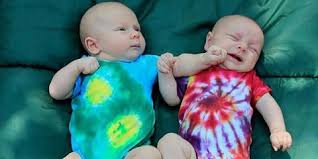
The downside of being a twin:
- For both identical and fraternal twins, a big downside is the comparison game: which twin is bigger, brighter, nicer, more attractive, more talented, etc.
- For identical twins, a huge challenge is to establish one’s individuality. Not everyone wants to his/her identity to be defined by twinness.
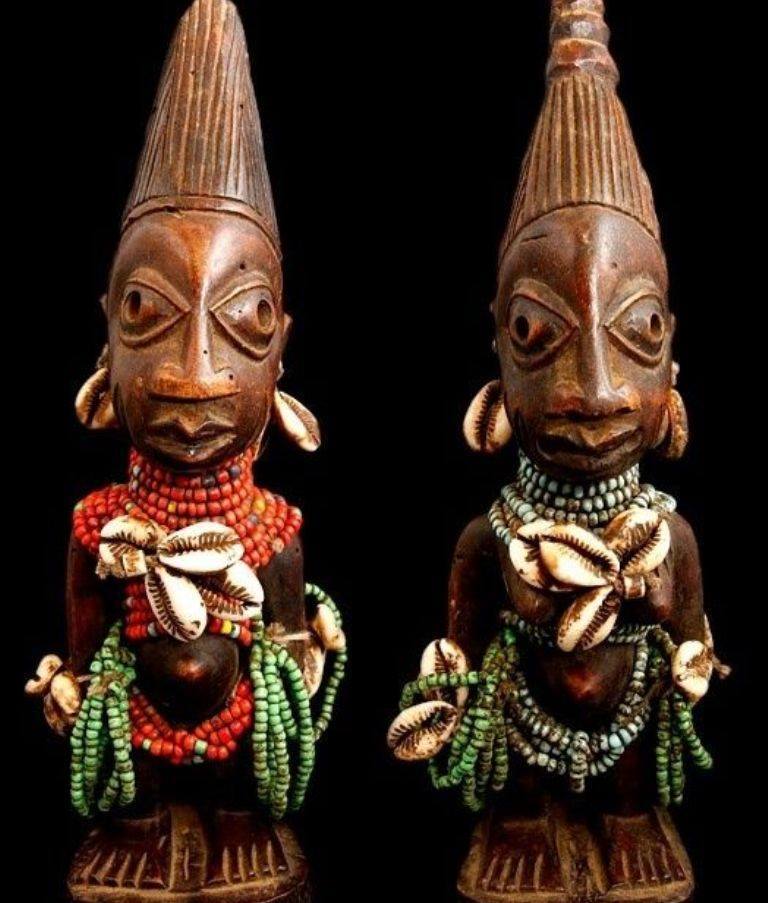
Celebrating twins
Yoruba twins have an annual festival in Ishara, a picturesque city on steep hills with dirt roads and what are reported to be “gingerbread-colored” houses (whatever that means). During the festival, twins in Ishara wear matching clothes, dance in the streets and exchange gifts. Their mothers cook the food, mostly beans.

The largest gathering of twins is the annual Twins Days Festival in Twinsburg, Ohio. Attendees can enjoy funnel cakes and other fair food. Thousands of twins participate, as well as other multiples. Researchers gather from far and wide to test volunteers and enlarge the body of knowledge associated with twins.

Bottom line for writers: twins are fertile ground for characters and plot. You can find an incredible amount of info online. Check it out!

